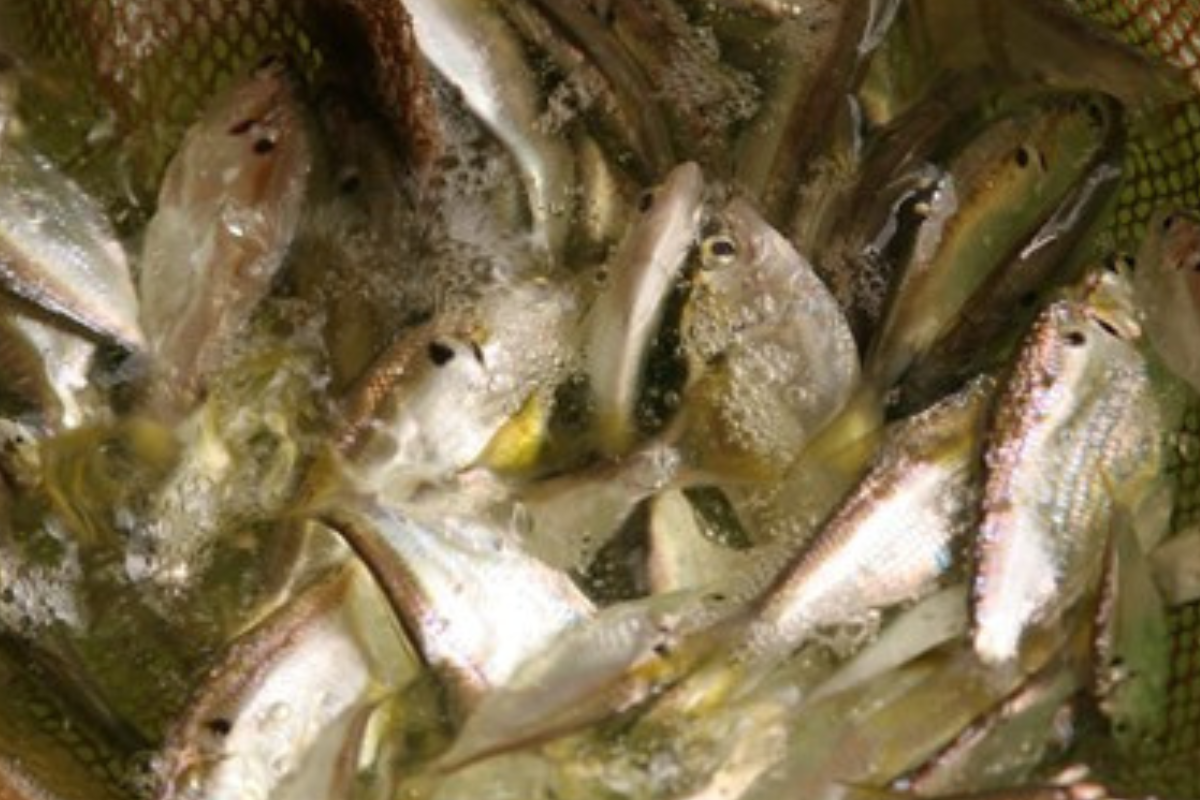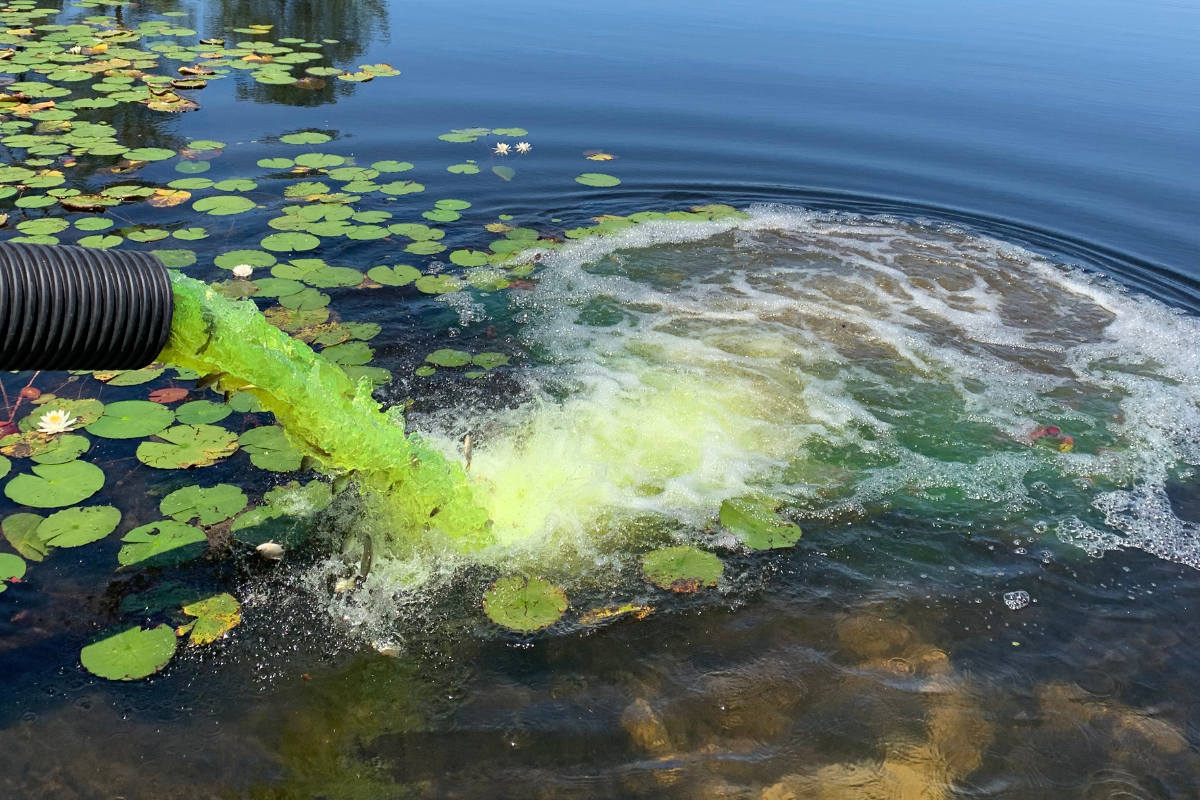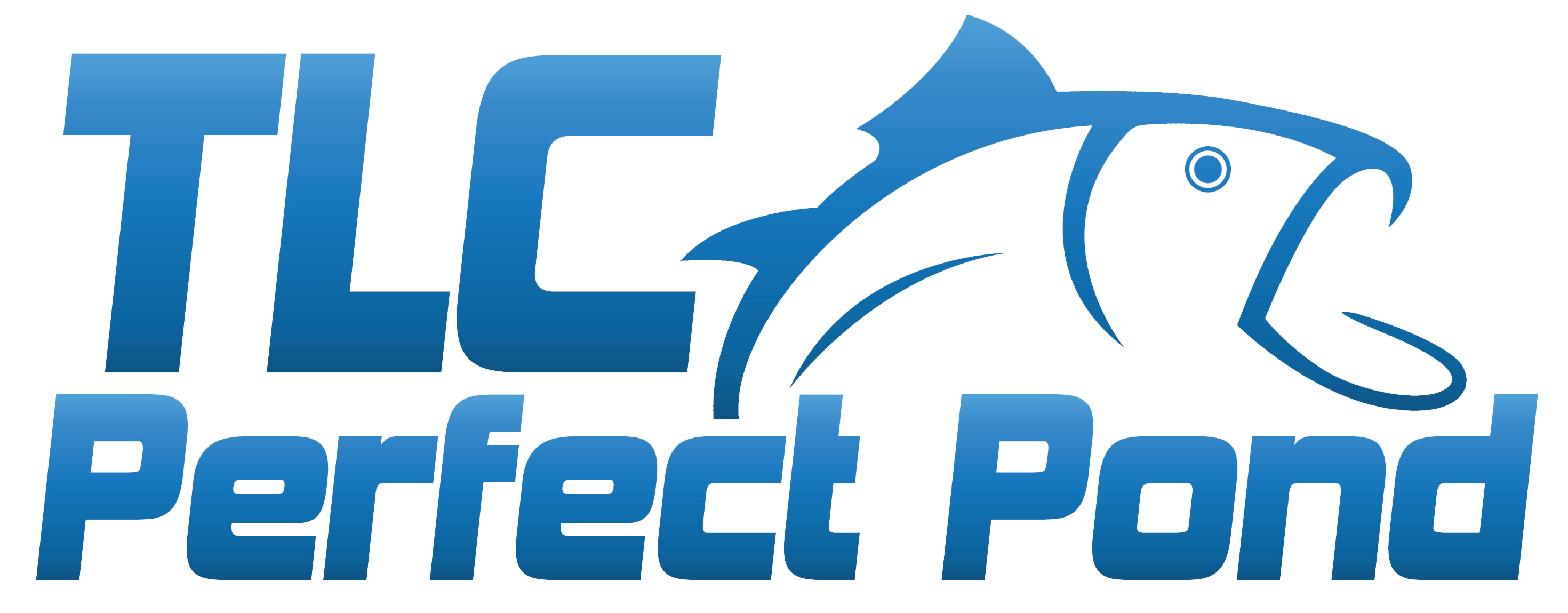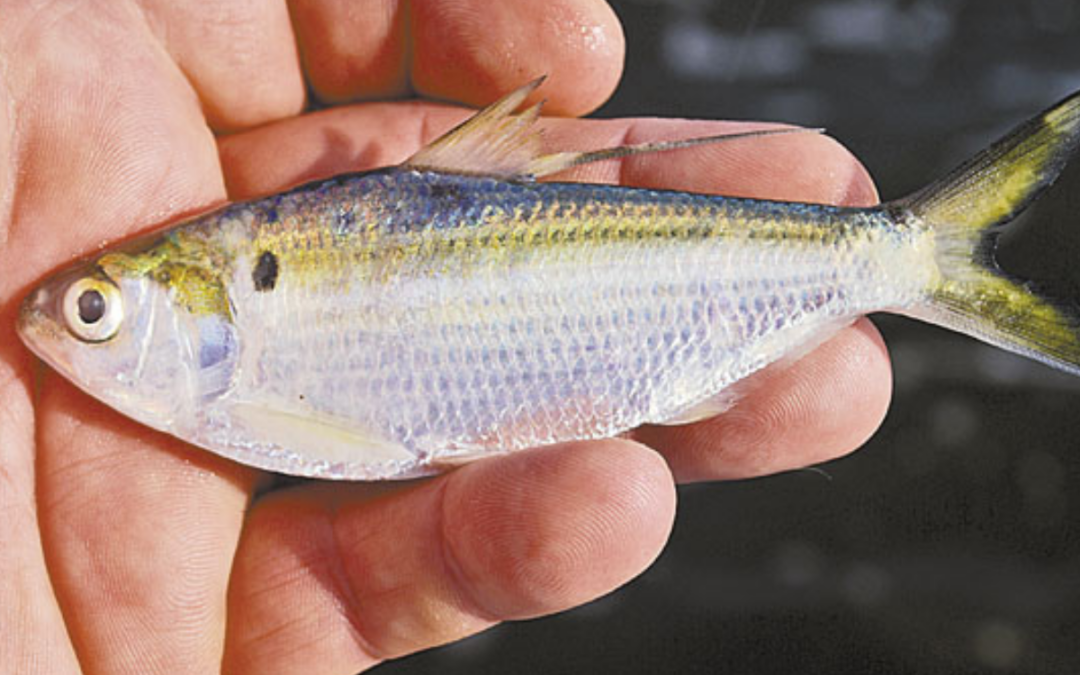Ever been bass fishing and seen a school of small fish popping the top of the water? Those are likely threadfin shad and largemouth bass love them! Stocking shad is a great way to put weight on the bass in your pond and take some pressure off the bluegill population, but shad are not for every pond. In this blog we’ll discuss the pros and cons of stocking threadfin shad in a pond or lake.
Why Are Threadfin Shad Great for Bass?
Threadfin shad are a great food source for largemouth bass because of their size. Unlike sunfish which can get 9-10″ long and too large for a largemouth bass to consume, shad usually only get 5-6″ long. This makes them the perfect meal for a mature largemouth bass! They are a great option for ponds with an established bass population that may be below standard weight. The addition of shad can help turn your skinny, 24″ bass into trophy fish with a robust shape.
Threadfin shad can also help to shift some predatory pressure from the bluegill population in your pond. If your bluegill are getting hammered too hard by an established largemouth bass population, few individuals may ever make it into the intermediate size range. Stocking shad allows you to provide another forage option for the bass and take some of the pressure off your bluegill. The end result is usually fat bass and a healthy, balanced bluegill population.
Threadfin shad have a high fecundity, which means they produce a significant amount of offspring each time they reproduce. Once a shad population is established, it usually maintains itself pretty well. Shad will start spawning when water temperatures reach 65-70°F in the spring and they’ll usually spawn several times throughout the warmer months. They also reach reproductive maturity fast and will usually spawn within their first year of growth.

Don’t Stock Threadfin Shad in Small Ponds
Threadfin Shad won’t work well in every pond due to their habitat and diet. They are pelagic fish, which means they prefer shooling in open water. This is much different than a sunfish which usually prefers some type of cover.
As a result, shad aren’t recommended for ponds less than a few acres because there’s not enough room for them to roam. Some fisheries biologists only recommend stocking shad in ponds that are 10 acres or larger. If you stock shad in a small pond, the bass will quickly consume them and the population won’t sustain itself over time.
One added benefit to their schooling is that it will cause the bass in your pond to modify their feeding behavior. Bass are typically ambush predators that lurk around the edges of heavy cover and capture sunfish. But when shad are present, they’ll chase them over the open water. When this feeding behavior is modified, it makes for some great topwater fishing with artificial lures!
Don’t Stock Threadfin Shad in Clear Ponds
Shad feed on plankton as they cruise through the open water. As a result, high pond fertility is required for a shad population to thrive. A clear pond with few plankton is not ideal for stocking shad.
If your pond water is really clear, you need to correct your fertility issue before stocking shad. This can be done via liming or fertilization. Liming a pond in the cooler months will help to release bound nutrients from the pond bottom and make the pond more responsive to fertilizations in the spring. Fertilizing a pond in the spring will stimulate “blooms” from the plankton population, turning your clear water to a fertile, green color.
Other Considerations When Stocking Shad
Threadfin shad have a low survivability in ponds where the water temperatures frequently dip below 40°F. As a result, they are more ideal for ponds in the southern part of the country. The warmer the water, the more they’ll thrive and reproduce year after year.
Shad will compete with juvenile bass for resources and reduce the amount of juvenile bass that grow into larger fish. This is usually not an issue in an established pond with a solid bass population. But we wouldn’t recommend stocking shad in a new pond where the bass population has yet to establish individuals in all size classes.
If you’re stocking shad, be on the lookout for cormorants. These birds can quickly deplete a shad population to the point where it won’t repopulate. If you’ve seen these birds around your pond, you may want to reconsider stocking shad.

When to Stock Threadfin Shad
Shad should be stocked in the spring months, preferably in March or April. This will allow the small fish to reach reproductive age within the first year so they can spawn and reproduce. Recommended stocking densities range from 500 to 1,000 fish per acre in larger ponds and lakes.
But as mentioned above, make sure to solve any vegetation or fertility issues before introducing shad. If your pond has too much cover and not enough open water, the shad population won’t thrive because there won’t be enough room for them to school. And if your pond fertility is too low, they won’t have enough to eat.
Let Up Help Improve Your Pond!
If you’re in the south GA or north FL areas, we’ll be glad to help by stocking shad in your pond. Just complete this form and we’ll contact you to schedule a time to meet. We look forward to turning your pond into a productive fishery for years to come!

